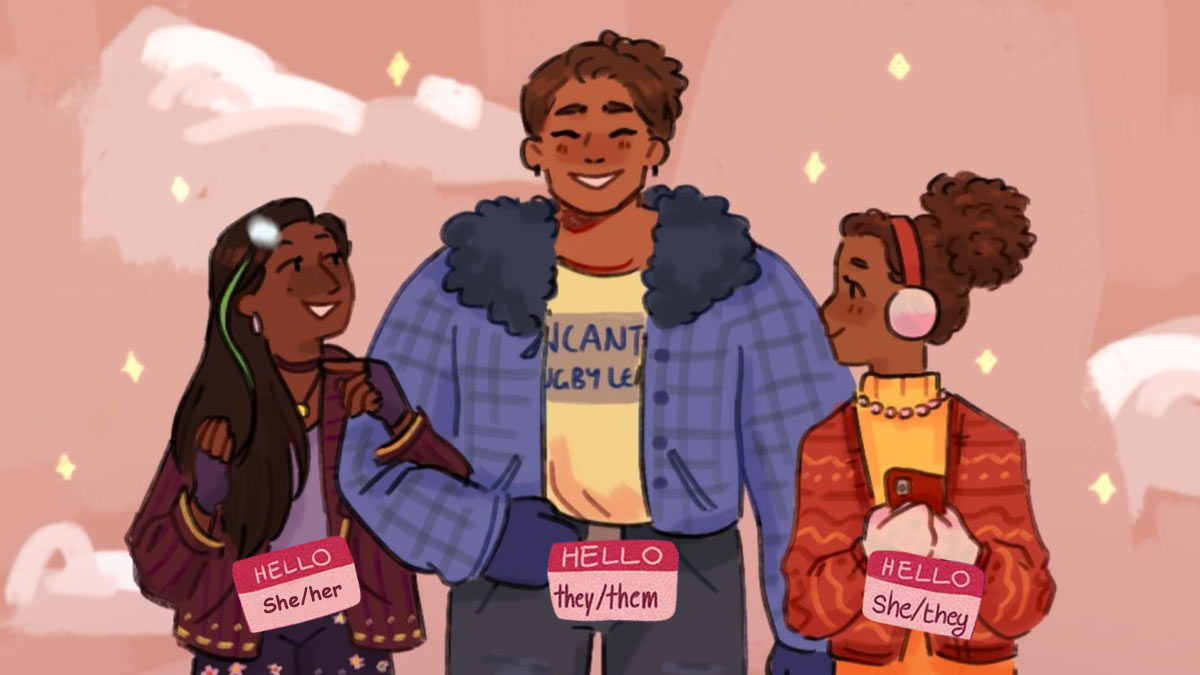
In recent years, discussions surrounding gender pronouns have gained noticeable traction across various platforms, including news outlets and social media. The practise of individuals introducing themselves with their preferred pronouns has become increasingly prevalent, a shift that is markedly different from the past. Previously, it was commonplace for people to make assumptions about others' pronouns without questioning or consideration.
Likewise, many individuals endured being misgendered without the opportunity to express their preferences. However, times have evolved, with a growing number of people striving for greater sensitivity and inclusivity. One significant way this is manifested is through the practise of asking individuals for their preferred pronouns and freely sharing one's pronouns as well.
Gender pronouns serve as the linguistic terms used to refer to individuals in the third person, much like their names. Just as a person's name affirms a part of their identity, so do their chosen gender pronouns. It's essential to understand that using incorrect pronouns can be just as disrespectful as misnaming someone.
In the English language, "he" typically refers to male nouns, "she" to female nouns, and "they" or "it" for nouns with no specific gender or whose gender is indeterminate. However, the traditional binary use of "he" or "she" fails to acknowledge the diversity of gender identities. Gender is not limited to a binary concept; rather, it exists along a spectrum. Individuals may identify as male, female, nonbinary, genderqueer, genderfluid, or any number of other gender-expansive identities.

Using appropriate gender identity terminology, such as pronouns, serves as a vital means of demonstrating respect and inclusivity. For instance, ensuring the use of accurate pronouns for transgender and nonbinary young individuals communicates a profound message of acknowledgement, affirmation, and acceptance. It's a tangible way to express love and support, especially during a period marked by discriminatory anti-trans legislation and policies. Ultimately, it's about acknowledging and embracing someone's identity, extending a gesture of acceptance. It transcends mere grammatical correctness; it's a powerful act of solidarity and compassion.
Additionally, it's worth noting that language continually evolves, and dictionaries are a reliable reflection of this evolution. A recent update by Merriam-Webster is particularly fascinating. They've expanded the definition of "they" to encompass non-binary individuals, illustrating how language adapts to reflect the diversity of identities in our society.
Don't Miss: Rishab Nanda: Breaking The Caricatured Portrayal Of LGBTQ Characters In Bollywood
Recognising and honouring diverse identities is essential for fostering inclusive spaces, whether in professional settings or everyday interactions. Gender-neutral pronouns play a pivotal role in this inclusivity.

To delve into the legal aspects of embracing gender pronouns for inclusivity, we reached out to Siddharth Chandrashekhar, an Advocate and Legal Counselpractising at the Bombay High Court and the Supreme Court. He said, “It is essential to recognise and respect the diverse identities of individuals, including gender and non-binary identities.
While Indian laws have traditionally operated within a binary understanding of gender, there has been increasing recognition and discussion around the rights and identities of transgender and non-binary individuals.”
Siddharth Chandrashekhar told us that the legal landscape regarding gender identity in India has evolved in recent years:
1. *Transgender Persons (Protection of Rights) Act, 2019*: This legislation aims to provide for the protection of rights of transgender persons and their welfare. It recognises the right of transgender persons to self-perceived gender identity, and it prohibits discrimination against them.
2. Supreme Court: Our Supreme Court has issued several landmark judgements recognising the rights of transgender and non-binary individuals and in fact the Apex Court has affirmed the right of transgender individuals to self-identify their gender and directed the government to recognise them as a third gender for the purpose of legal recognition and protection.
3. *Personal Laws and Legal Documentation*: While personal laws (safety laws for women) in India at present often operate within a binary gender framework, there have been instances where courts have allowed individuals to change their gender identity on legal documents such as passports and driver's licences.
4. *Challenges *: Despite these developments, there are still challenges and gaps in the legal framework regarding gender identity in India. Many laws and policies have yet to fully recognise and accommodate the rights and needs of transgender and non-binary individuals.
Don't Miss: Shattering Assumptions: Unravelling LGBTQ Stereotypes And Their Impact On Society
He further said, “There is certainly a need for greater awareness, sensitivity, and inclusivity in legal practise and policymaking. As a lawyer, it's important to advocate for the rights of all individuals, regardless of their gender identity. This includes supporting legal reforms, raising awareness, providing legal assistance, and challenging discriminatory practises.”
When it comes to acknowledging gender pronouns, the intention behind it is rooted in kindness. This act of kindness is significant and is often appreciated by those it affects. Therefore, the solution is understanding that using accurate gender pronouns goes beyond mere grammatical correctness. It's a fundamental gesture of respect towards individuals and contributes to the creation of a more fair and equitable society.
Keep reading Herzindagi for more such stories.
Credits: Freepik/ Tumblr
Also watch this video
Herzindagi video
Our aim is to provide accurate, safe and expert verified information through our articles and social media handles. The remedies, advice and tips mentioned here are for general information only. Please consult your expert before trying any kind of health, beauty, life hacks or astrology related tips. For any feedback or complaint, contact us at compliant_gro@jagrannewmedia.com.